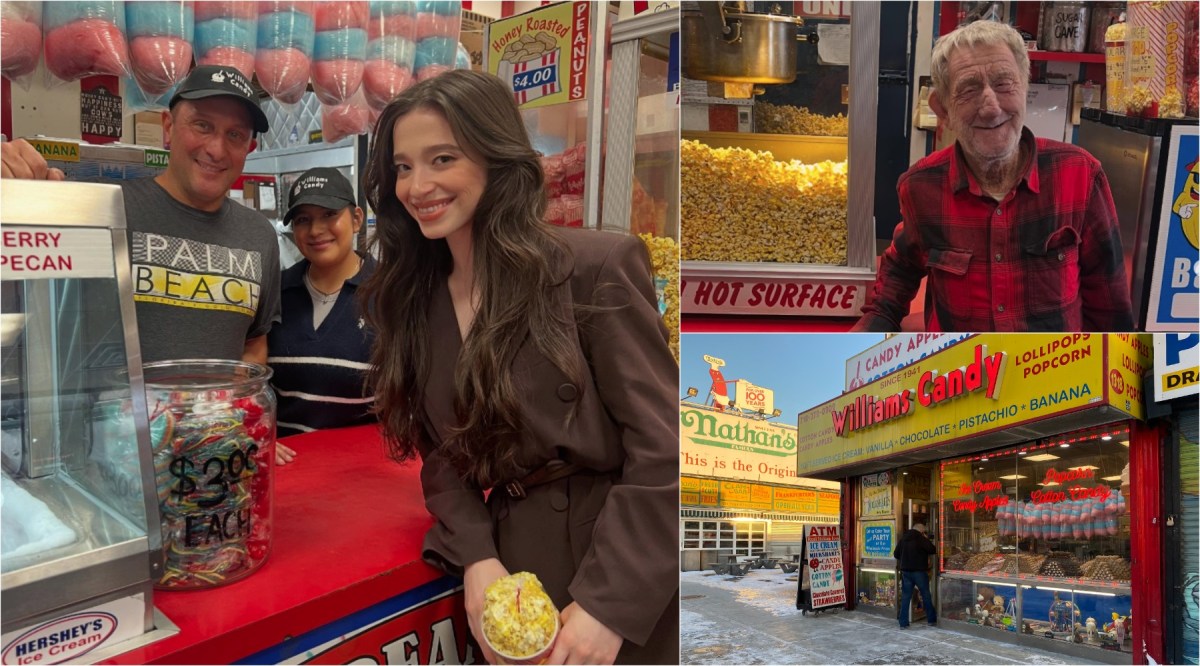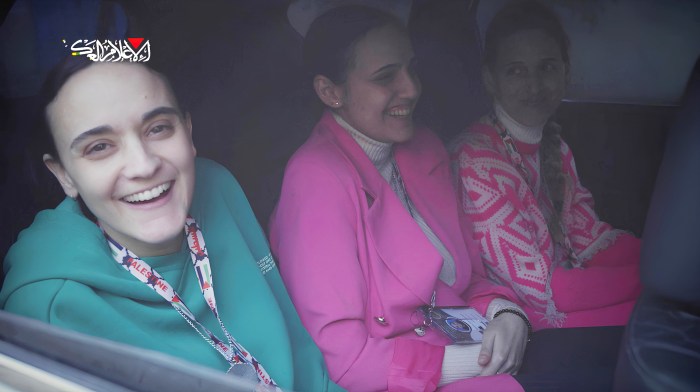BY ABBY LUBY
Veteran artist Joseph Solman sat in a worn recliner in his living room, its walls bedecked with richly colored portraits and street scenes that he’s painted over the last 80 years, many in the same sixth-floor apartment on 10th St. and Second Ave. where he’s lived and worked for the past five decades. Oddly out of place in his living room was a large, flat-screen TV.
“I love to watch programs about animals,” said Solman, 98, softly.
Since getting outside is an effort for the nanogenarian, TV images have partially replaced city parks, bridges, storefronts, rooftops, and park benches, once the inspiration for many of Solman’s drawings and paintings. Driven by city wanderlust, he would never leave his apartment without his drawing pad, upon which he sketched sleeping subway riders, folks taking respite in a park, or pensive readers at the 42nd Street Library.
In 1935, along with Mark Rothko and Adolph Gottlieb, Solman founded “The Ten,” a group of New York City artists who broke from the mainstream art of American scenic painters like Grant Wood and Thomas Hart Benton. Solman is the group’s sole survivor.
“It started because galleries were showing too many artists that we didn’t like — too many dark, romantic pictures,” Solman said. “We felt our drawings were more honest and stable and that we were doing better work.”
At that same time, Rothko wrote “Whitney Dissenters’ Manifesto,” a rail against the museum’s show of American art. In 1940, after several of The Ten became better known, they disbanded. Although Rothko, known as Marcus Rothkowitz, and Gottlieb veered off to abstract expressionism, Solman steadfastly remained a figurative painter with his own expressionist bent, which critics have described as a fusion of representationalism, Cubism, and abstraction.
An artist in the Works Project Administration (WPA) during the depression, Solman met and worked with and befriended many great artists, like Milton Avery. “Avery had a big influence on me when I was young and working in the WPA,” said Solman. “That was a great program, I couldn’t have worked without it. It’s where I saw Paul Klee’s work, which I liked very much.”
Avery had, in fact, called on Solman’s writing expertise to write an introduction to Avery’s famous set of five original etchings. Solman’s literary talent became known early on when he became editor-in-chief for Art Front magazine, published in the late ’30s. Solman boldly introduced photography as an art form in the magazine.
In the early ’50s, abstract expressionism was the new American art hegemony. Solman, pressing his agenda against any one dominant art aesthetic, partnered with Edward Hopper and Jack Levine and founded Reality, an artists’ publication aligned against abstract expressionism.
His work — paintings of back streets, coal bins, ice cellars, storefronts — were re-created in textured, luminous colors and jaunty angles.
“My streets scenes were more meaningful,” he said. “They were romantic — just like the feeling between a man and a woman, but different. Here that same feeling can relate to something in the atmosphere that creates a feeling between the viewer and the painter.”
Solman’s sense of rhythmic textures within the form stretches our sensibilities of how we can see the world. The sky over a harbor is a loose, lathery gray wash; a still life yields to quirky soft lines intoning an ethereal ambiance. Faces in Solman’s portraits are sometimes fuchsia, lime, or ochre, fusing with similarly colored backgrounds. In 1999 Solman painted a green-tinted portrait of George Stephanopoulos, Bill Clinton’s former adviser. He didn’t buy the painting.
“The colors gives faces a classic quality,” Solman said. “And I didn’t think it was important to explain it to some people although they thought it was [important].” Within facial features, Solman folds in abstraction with small, multi-colored brushstrokes or thickly textured paint to enliven a cheek or an eyelid.
Solman recently saw the movie “Alice Neel.” He knew Neel in the ’60s and ’70s and with a bit of bravado said, “Neel was the best portrait artist in the country, but then she wasn’t really. First I was the best portrait artist and then I made her known.”
His circle of friends included Willem de Kooning, Milton Avery, and Raphael Sawyer. At one point, Solman would often escape the city’s summer heat with Avery, John Sloan and Marsden Hartley to paint in Cape Ann, MA.
But New York was always home base to Solman, a city he claims is changing every day. His cluttered but comfortable apartment is over what used to be the Second Avenue Deli, a kosher dining institution since 1954. The deli closed last year after problems with the landlord. Ten years ago deli owner Abe Lebewoh was mysteriously murdered — today the crime is still unsolved. Abe’s brother Jack ran the restaurant after his death. Now the deli has been supplanted by a bank.
“There are changes in the city about every two weeks,” said Solman, who ventures out as much as possible with the help of his home aide. “The size of the streets change and so do the buildings. The deli is now a bank — there are banks on every corner. How many banks do we need? We don’t have enough money to put in so many banks.”
Solman is represented in major museums and galleries including the Hirshhorn Museum, the Smithsonian American Art Museum, the Phillips Collection in Washington, DC, as well as the Whitney here in New York.
In one of the many books on Solman’s paintings crammed into his bookshelves, he turned to the 1930 piece, “Solman Sign Co.,” and said it was a semi-abstract work. Floating haphazardly on assorted square signs are prosthetic limbs, special corsets, neck braces, a crutch. The number “51,” painted in a garish orange over black, hangs near a small white ovular sign at the top with delicate cursive letters reading “Solman’s Sign Co.”
“I saw these surreal objects in a storefront and I painted it straight,” said Solman, pointing to the reproduction in the book. “In those days a piece became semi-abstract if you put one letter in it which was enough to make the work more serious. If you put a whole sign in it you were telling a story.”
Community board calendar Oct. 3-11
































